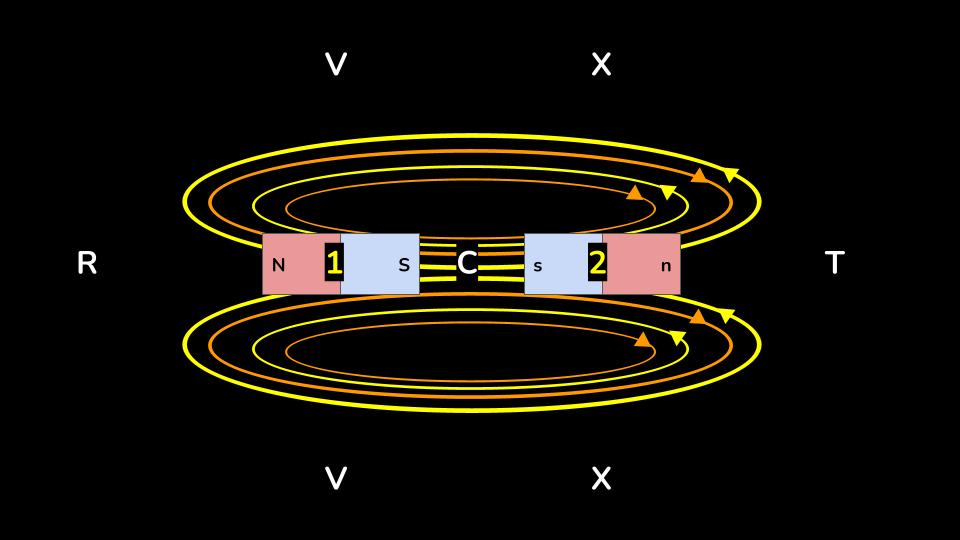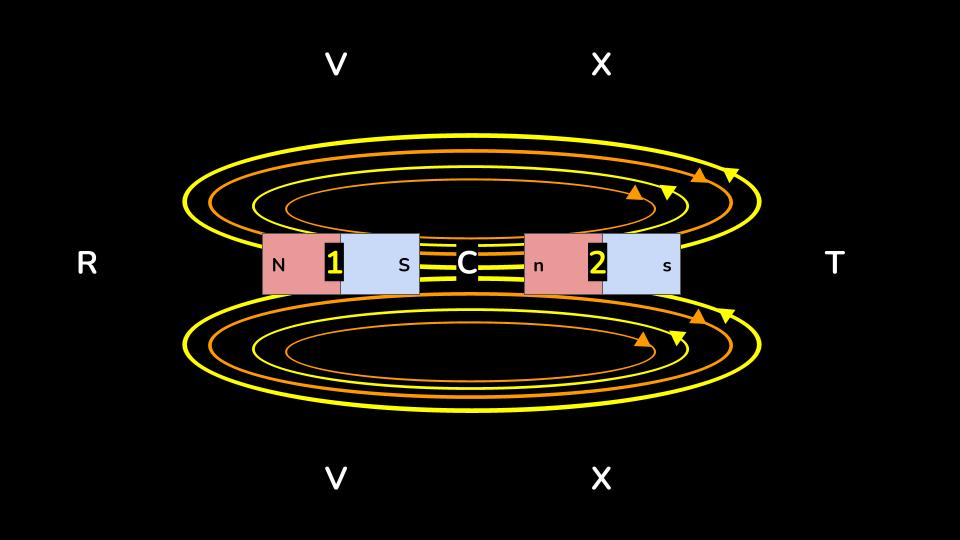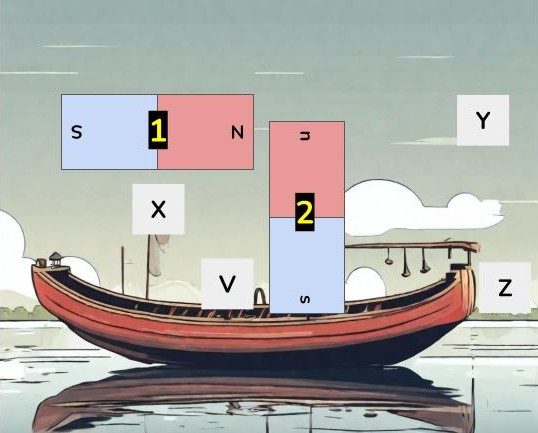Why do 2 Magnets Attract Each Other?
Table of Contents
Superphysics Note
1st Element with fire-aether, and 2nd Element with air-aether (space particles) in order to match modern Physics and make it easier to understand
152. Why one magnet is attrcted by another.
Virtual photons are always gathered in much greater quantity around each magnet than in the remote air.
- This is because the magnet has passages that they can flow through much more easily than through the surrounding air.
This retains them near the magnet.
Their quantity is greater in the whole air and other bodies surrounding the Earth than in nearby outer space because of the passages they have in the Earth’s interior.
The Earth itself can be called the greatest magnet.
153. The North and South Poles of 2 Magnets will attract each other.
The virtual photons move extremely fast as long as they are in the passages of the magnets. This is because there they are borne by the impulse of the fire-aether to which they belong.
When they go out from the magnet, they meet the particles of other bodies that drive them away, since these belong to the air-aether of earth-aether and do not have so much speed.

Thus, those which pass through the magnet 1 are of 2 kinds:
- Those going from
StoN. Inside the magnet, they acquire the force to proceed further in straight lines towardsR - Those going from
NtoS. These acquire the force to proceed further in straight lines towardsC
In R and C they meet so many air-aether or earth-aether particles.*
- These reflect them back towards
V.
Superphysics Note
The whole space RVC through which they are thus dispersed is called the sphere of power or activity of this magnet 1.
This sphere of power is greater the larger the magnet, especially the longer it is in the line NS.
- This is because the virtual photons, progressing farther through it, acquire more agitation.
Thus also those which pass through the magnet 2 go straight on both sides towards C and T.
- From there, they are reflected towards
X, and drive the whole air-aether contained in the sphere of their activity.
They expel the air-aether if there is a place where they can move away.
- This separates the spheres of power [magnetic fields] of these magnets
But when they coalesce into one, then it is easier for the virtual photons:
- coming from magnet
1towardsCto proceed straight on to magnet2than to be reflected towardsV
- coming from magnet
2towardsCto proceed straight on to magnet1than to be reflected towardsX

Thus these virtual photons pass through these 2 magnets 1 and 2 as if they were one.
Then it is easier for the virtual photons, proceeding straight from 1 to 2, and from 2 to 1, to expel the intermediate air-aether from C and thus cause these magnets to attract until they touch at C.
154. Why do magnets repel each other when brought together?
The poles of two magnets, such as South and South or North and North, repel each other if brought too close.
The virtual photons coming from the pole of one magnet that faces the other cannot enter the other magnet.
- They require some space between the two magnets to pass through in order to return to the pole of the magnet where they came from.

Those coming out of Magnet 1 through the pole S cannot enter into Magnet 2 through its pole s.
- They need some space between
Sandsto pass towardsVandX. - This force moves them from
NtoS, repelling Magnet2.
And so, coming out of Magnet 2 they repel the Magnet 1 at least when their axes NS and ns are in the same straight line.
But when they are bent ever so little more to one side than to the other, then these magnets turn themselves, in the manner explained before.
If this turning is prevented, but not their straight motion, then again one magnet drives the other away in a straight line.

Assume that:
- Magnet
2is placed on a small boat with its axis upright perpendicular to the surface - Magnet
1is placed near, with its North pole facing the North pole of Magnet2
If Magnet 1 is moved towards Y, Magnet 2 will move away towards Z before it touches Magnet 1.
This is because no matter how the boat turns, there always needs to be some space between these two magnets for the striped particles exiting through poles N and n to pass through towards V and X.